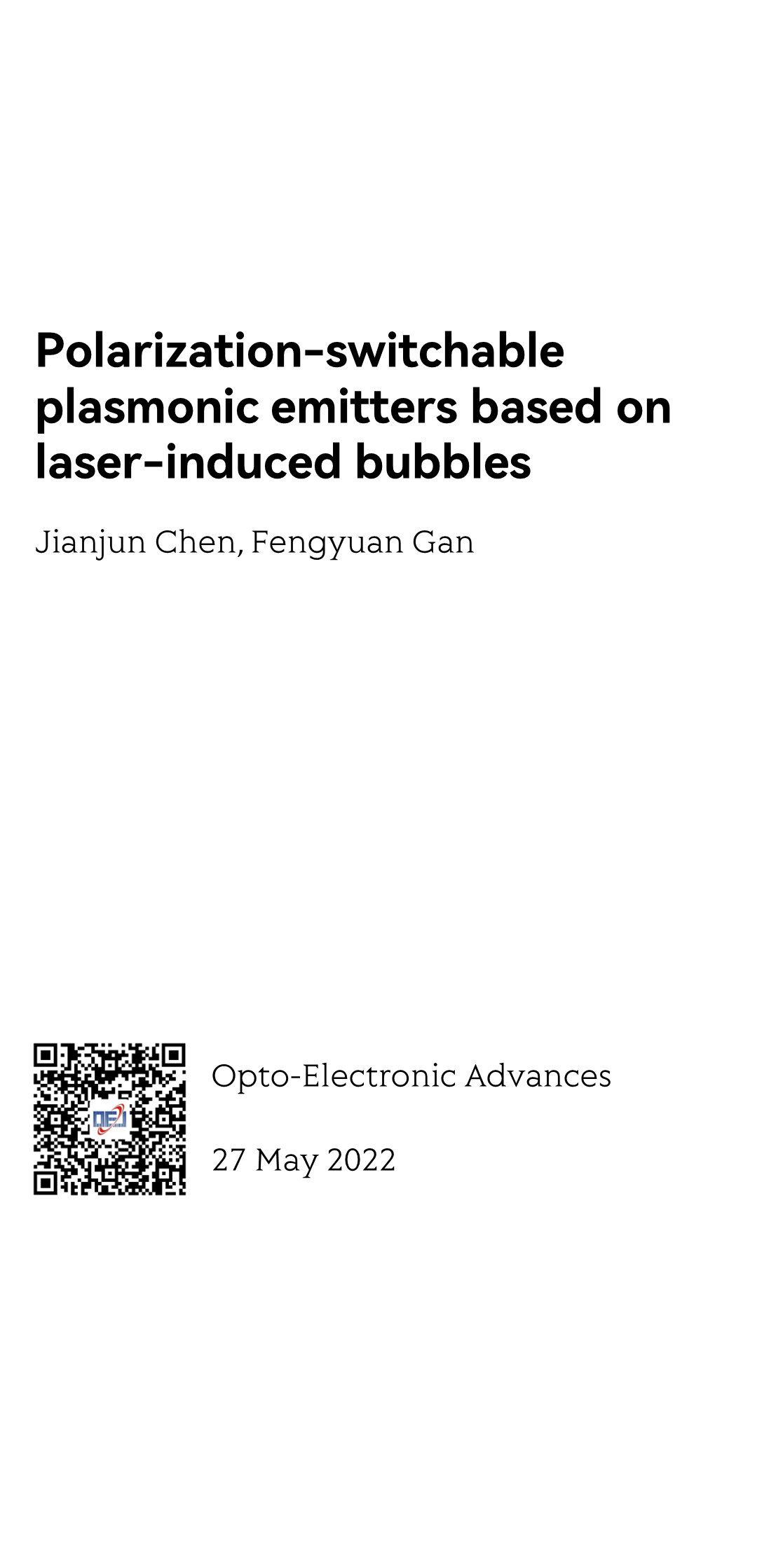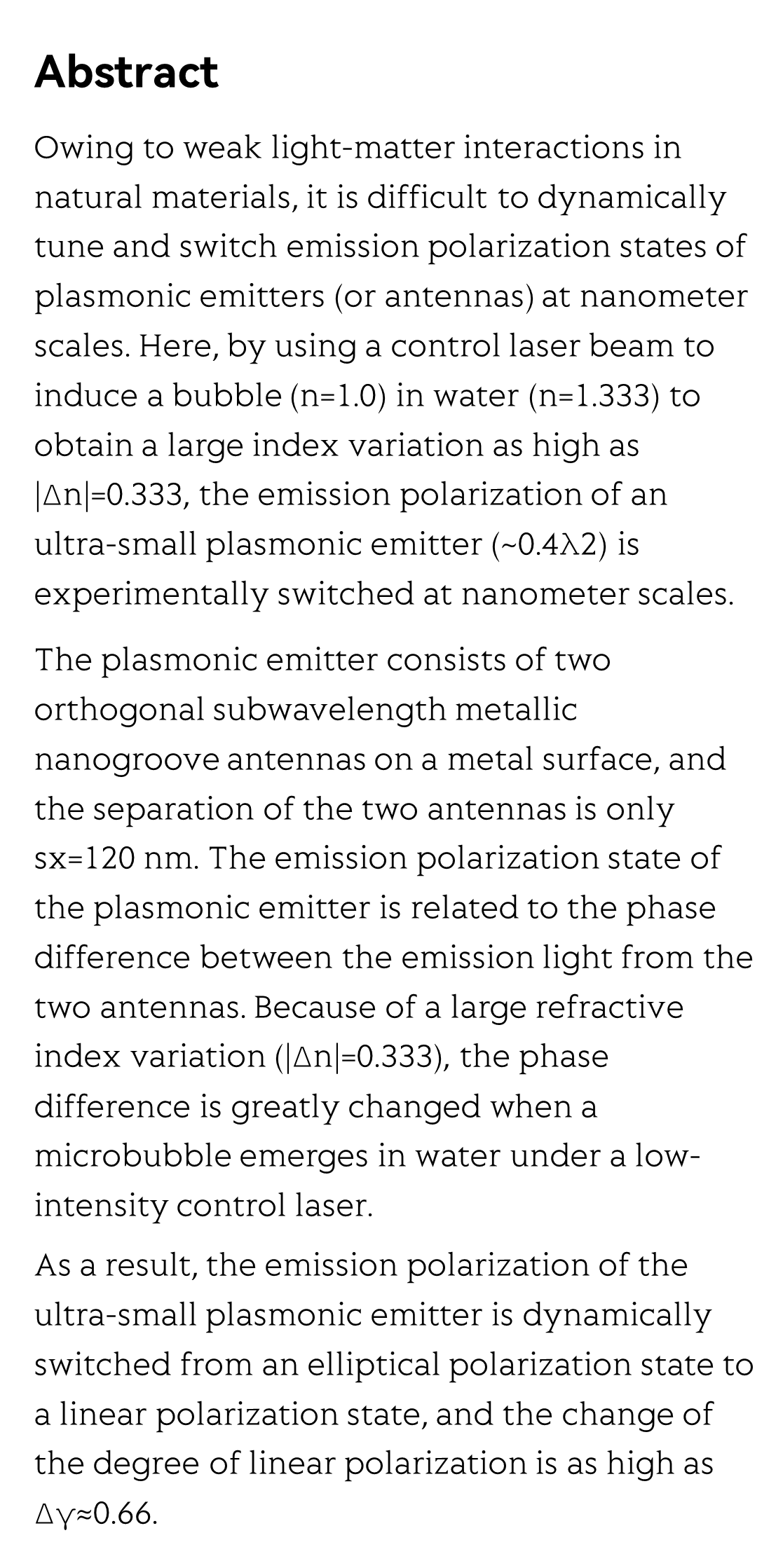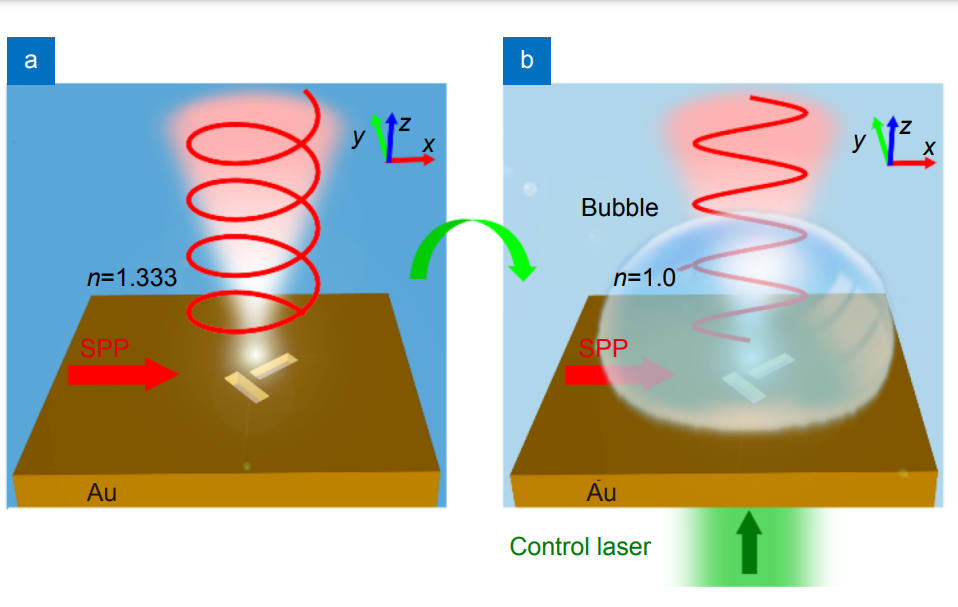(Peer-Reviewed) Polarization-switchable plasmonic emitters based on laser-induced bubbles
Jianjun Chen ¹ ² ³ ⁴ ⁵ 陈建军, Fengyuan Gan 甘峰源 ²
¹ Department of Physics and Applied Optics Beijing Area Major Laboratory, Beijing Normal University, Beijing 100875, China
中国 北京 北京师范大学物理学系 北京市应用光学重点实验室
² State Key Laboratory for Mesoscopic Physics, School of Physics, Peking University, Beijing 100871, China
中国 北京 北京大学 人工微结构和介观物理国家重点实验室
³ Peking University Yangtze Delta Institute of Optoelectronics, Nantong 226010, China
中国 北京 北京大学 长三角光电科学研究院
⁴ Frontiers Science Center for Nano-optoelectronics & Collaborative Innovation Center of Quantum Matter, Peking University, Beijing 100871, China
中国 北京 北京大学 纳光电子前沿科学中心 量子物质科学协同创新中心
⁵ Collaborative Innovation Center of Extreme Optics, Shanxi University, Taiyuan 030006, China
中国 太原 山西省极端光学协同创新中心
Opto-Electronic Advances, 2022-05-27
Abstract
Owing to weak light-matter interactions in natural materials, it is difficult to dynamically tune and switch emission polarization states of plasmonic emitters (or antennas) at nanometer scales. Here, by using a control laser beam to induce a bubble (n=1.0) in water (n=1.333) to obtain a large index variation as high as |Δn|=0.333, the emission polarization of an ultra-small plasmonic emitter (~0.4λ2) is experimentally switched at nanometer scales.
The plasmonic emitter consists of two orthogonal subwavelength metallic nanogroove antennas on a metal surface, and the separation of the two antennas is only sx=120 nm. The emission polarization state of the plasmonic emitter is related to the phase difference between the emission light from the two antennas. Because of a large refractive index variation (|Δn|=0.333), the phase difference is greatly changed when a microbubble emerges in water under a low-intensity control laser.
As a result, the emission polarization of the ultra-small plasmonic emitter is dynamically switched from an elliptical polarization state to a linear polarization state, and the change of the degree of linear polarization is as high as Δγ≈0.66.
Flicker minimization in power-saving displays enabled by measurement of difference in flexoelectric coefficients and displacement-current in positive dielectric anisotropy liquid crystals
Junho Jung, HaYoung Jung, GyuRi Choi, HanByeol Park, Sun-Mi Park, Ki-Sun Kwon, Heui-Seok Jin, Dong-Jin Lee, Hoon Jeong, JeongKi Park, Byeong Koo Kim, Seung Hee Lee, MinSu Kim
Opto-Electronic Advances
2025-09-25
Dual-frequency angular-multiplexed fringe projection profilometry with deep learning: breaking hardware limits for ultra-high-speed 3D imaging
Wenwu Chen, Yifan Liu, Shijie Feng, Wei Yin, Jiaming Qian, Yixuan Li, Hang Zhang, Maciej Trusiak, Malgorzata Kujawinska, Qian Chen, Chao Zuo
Opto-Electronic Advances
2025-09-25





